Mussels
-
Lagoon cockle
Read MoreCerastoderma glaucum, commonly known as the lagoon cockle, is a species of saltwater clam, a marine bivalve mollusc in the family Cardiidae, the cockles.
This species is found along the coasts of Europe and North Africa, including the Mediterranean and Black Seas and the Caspian Lake, and the low-salinity Baltic Sea. It is a euryhaline species living in salinities 4-100 ‰. In north-west Europe (including the British Isles), it typically does not live on open shores but rather in shallow burrows in saline lagoons, or sometimes on lower shores in estuaries. It cannot tolerate significant exposure to the air. The form found in lagoons is thinner-shelled than the estuarine populations.
The lagoon cockle can grow to the length of 50 mm. In north-west Europe, it spawns in May–July, and the planktonic larval phase takes 11–30 days. The life span of the settled cockle is typically 2–5 years.
The species was described as Cardium glaucum in 1789 almost simultaneously both by Bruguière and by Poiret. -
Dog cockle/European bittersweet
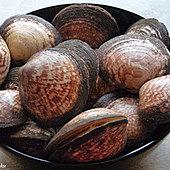 Read More
Read MoreCerastoderma glaucum, commonly known as the lagoon cockle, is a species of saltwater clam, a marine bivalve mollusc in the family Cardiidae, the cockles.
This species is found along the coasts of Europe and North Africa, including the Mediterranean and Black Seas and the Caspian Lake, and the low-salinity Baltic Sea. It is a euryhaline species living in salinities 4-100 ‰. In north-west Europe (including the British Isles), it typically does not live on open shores but rather in shallow burrows in saline lagoons, or sometimes on lower shores in estuaries. It cannot tolerate significant exposure to the air. The form found in lagoons is thinner-shelled than the estuarine populations.
The lagoon cockle can grow to the length of 50 mm. In north-west Europe, it spawns in May–July, and the planktonic larval phase takes 11–30 days. The life span of the settled cockle is typically 2–5 years.
The species was described as Cardium glaucum in 1789 almost simultaneously both by Bruguière and by Poiret. -
Blue mussels 60/75
 Read More
Read MoreShellfish is a culinary and fisheries term for exoskeleton-bearing aquatic invertebrates used as food, including various species of molluscs, crustaceans, and echinoderms. Although most kinds of shellfish are harvested from saltwater environments, some kinds are found in freshwater. In addition, a few species of land crabs are eaten, for example Cardisoma guanhumi in the Caribbean.
Despite the name, shellfish are not a kind of fish, but are simply water-dwelling animals. Many varieties of shellfish (crustaceans in particular) are actually closely related to insects and arachnids, making up one of the main classes of the phylum Arthropoda. Cephalopods (squids, octopi, cuttlefish) and bivalves (clams, oysters) are molluscs, as are snails and slugs.
Familiar marine molluscs used as a food source by humans include many species of clams, mussels, oysters, winkles, and scallops. Some crustaceans commonly eaten are shrimp, lobsters, crayfish, and crabs. Echinoderms are not as frequently harvested for food as molluscs and crustaceans; however, sea urchin roe is quite popular in many parts of the world.
Most shellfish eat a diet composed primarily of phytoplankton and zooplankton.
Shellfish are among the most common food allergens. -
Blue mussels MAP,
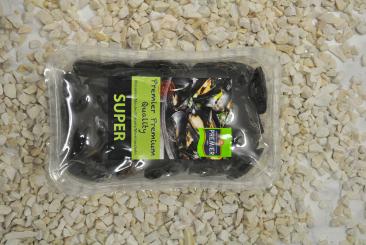 Read More
Read MoreShellfish is a culinary and fisheries term for exoskeleton-bearing aquatic invertebrates used as food, including various species of molluscs, crustaceans, and echinoderms. Although most kinds of shellfish are harvested from saltwater environments, some kinds are found in freshwater. In addition, a few species of land crabs are eaten, for example Cardisoma guanhumi in the Caribbean.
Despite the name, shellfish are not a kind of fish, but are simply water-dwelling animals. Many varieties of shellfish (crustaceans in particular) are actually closely related to insects and arachnids, making up one of the main classes of the phylum Arthropoda. Cephalopods (squids, octopi, cuttlefish) and bivalves (clams, oysters) are molluscs, as are snails and slugs.
Familiar marine molluscs used as a food source by humans include many species of clams, mussels, oysters, winkles, and scallops. Some crustaceans commonly eaten are shrimp, lobsters, crayfish, and crabs. Echinoderms are not as frequently harvested for food as molluscs and crustaceans; however, sea urchin roe is quite popular in many parts of the world.
Most shellfish eat a diet composed primarily of phytoplankton and zooplankton.
Shellfish are among the most common food allergens. -
Razor clam 12cm
Read MoreEnsis directus, also known as the bamboo clam, American jackknife clam or razor clam (but note that "razor clam" sometimes refers to different species), is a large species of edible marine bivalve mollusc, found on the North American Atlantic coast, from Canada to South Carolina. It has also been introduced to Europe.
This clam lives in sand and mud and is found in intertidal or subtidal zones in bays and estuaries. Because of its streamlined shell and strong foot, it can burrow in wet sand very quickly, and is also able to swim. It gets its name from the rim of the shell being extremely sharp (stepping on one can cause injury) and the shape of the clam overall bearing a strong resemblance to an old fashioned straight razor.
At low tide the position of the Atlantic jackknife clam is revealed by a keyhole-shaped opening in the sand; when the clam is disturbed, a small jet of water squirts from this opening as the clam starts to dig. This species' remarkable speed in digging can easily outstrip a human digger, making the clam difficult to catch. Thus the species is not often commercially fished, even though it is widely regarded as a delicacy: in coastal Massachusetts, they are sought after in the summer by locals to make home cooked clam strips and most towns insist upon regulations dictating how many can be taken at a time.[1] The easiest way to catch jackknives is to pour salt on the characteristic breathing holes. The clam will try to escape the salt by coming up out of its hole, at which point you can gently grab the shell and pull it out of the ground.
Predators of Ensis directus other than humans include birds, such as the ring-billed gull (Larus delawarensis) in North America and the Eurasian oystercatcher (Haematopus ostralegus) in Europe, and the nemertean worm Cerebratulus lacteus.
The Atlantic jackknife clam is now also found in northwestern Europe, where it is regarded as a harmful exotic species. It was first recorded in Europe in 1978/79, in the Elbe estuary.
The Atlantic jackknife clam has inspired a kind of biomimetic anchor in development by a team at the Massachusetts Institute of Technology, adapting the clam's digging method for use in keeping undersea cables and potentially watercraft anchored securely. -
Smooth Clam
Read MoreThe smooth clam, Callista chione, (also sometimes classified as Cytherea chione or Meretrix chione) is a rather large, temperate, marine, bivalve mollusc that inhabits sandy bottoms or with small pebbles in clean waters down to about 200 m from the British Isles to the Mediterranean.The shell can reach up to about 110 mm Ø, its outer side is smooth and ranges from light greenish creamy colour to medium brown, probably varies to match the background; the interior is white to soft pink. The concentric and radial growth lines are easily seen. Callista chione is edible, different dishes are prepared throughout the Mediterranean in Spain, Italy, France, the Balkan and the Magreb countries.
It has been found that, as is the case with many bivalve molluscs, which are filter-feeders, (they feed by filtering food particles from the water), that Callista chione, common in fish markets in the Mediterranean, concentrates toxins from dinoflagellates blooms associated with pollution events such as red tides, sewage water, old sediment dredging, ship ballast water dumping, etc. These toxins cannot be eliminated by the traditional cleansing of shellfish in clean water or by cooking, and can be responsible for complex human health problems: respiratory ailments, skin rashes, even paralysis, etc., such as it is known now to have occurred in New Orleans, associated with the contact or ingestion of severely contaminated water, left by Katrina. -
Scallop
Read MoreMany species of scallops are highly prized as a food source, and some are farmed as aquaculture. The word "scallop" is also applied to the meat of these bivalves when it is sold as seafood. In addition the name "scallop" is used as part of the name of dishes based on the meat of scallops, and is even applied to some dishes not containing scallop at all but which are prepared in a similar fashion. The brightly colored, symmetrical, fan-shaped shells of scallops with their radiating and often fluted sculpture are valued by shell collectors, and have been used since ancient times as motifs in art, architecture and design.
Scallops do produce pearls, though the pearls do not have the buildup of layers, or “nacre”, and may not have luster or iridescence. They can be dull, small and of varying color, but there are exceptions that are appreciated for their aesthetic qualities. -
Scallop meat 1kg
Read MoreMany species of scallops are highly prized as a food source, and some are farmed as aquaculture. The word "scallop" is also applied to the meat of these bivalves when it is sold as seafood. In addition the name "scallop" is used as part of the name of dishes based on the meat of scallops, and is even applied to some dishes not containing scallop at all but which are prepared in a similar fashion. The brightly colored, symmetrical, fan-shaped shells of scallops with their radiating and often fluted sculpture are valued by shell collectors, and have been used since ancient times as motifs in art, architecture and design.
Scallops do produce pearls, though the pearls do not have the buildup of layers, or “nacre”, and may not have luster or iridescence. They can be dull, small and of varying color, but there are exceptions that are appreciated for their aesthetic qualities. -
Scallop meat 2kg
Read MoreMany species of scallops are highly prized as a food source, and some are farmed as aquaculture. The word "scallop" is also applied to the meat of these bivalves when it is sold as seafood. In addition the name "scallop" is used as part of the name of dishes based on the meat of scallops, and is even applied to some dishes not containing scallop at all but which are prepared in a similar fashion. The brightly colored, symmetrical, fan-shaped shells of scallops with their radiating and often fluted sculpture are valued by shell collectors, and have been used since ancient times as motifs in art, architecture and design.
Scallops do produce pearls, though the pearls do not have the buildup of layers, or “nacre”, and may not have luster or iridescence. They can be dull, small and of varying color, but there are exceptions that are appreciated for their aesthetic qualities. -
Scallop in half shell
Read MoreMany species of scallops are highly prized as a food source, and some are farmed as aquaculture. The word "scallop" is also applied to the meat of these bivalves when it is sold as seafood. In addition the name "scallop" is used as part of the name of dishes based on the meat of scallops, and is even applied to some dishes not containing scallop at all but which are prepared in a similar fashion. The brightly colored, symmetrical, fan-shaped shells of scallops with their radiating and often fluted sculpture are valued by shell collectors, and have been used since ancient times as motifs in art, architecture and design.
Scallops do produce pearls, though the pearls do not have the buildup of layers, or “nacre”, and may not have luster or iridescence. They can be dull, small and of varying color, but there are exceptions that are appreciated for their aesthetic qualities. -
Warty venus spanish
 Read More
Read MoreThe warty venus, Venus verrucosa, is a species of saltwater clam. It is a species of marine bivalve mollusc in the family Veneridae, sometimes collectively known as the venus clams. Known as praire in France, it is an expensive delicacy there, and harvesting periods and size of catch (both minimum shell size and numbers taken) have had to be strictly regulated for its conservation. It is eaten either raw or baked in the oven with garlic butter.
-
Chamelea gallina/Vongola lupino
Read MoreChamelea gallina is a species of small saltwater clam, a marine bivalve in the family Veneridae, the venus clams. This species is used for food. In 1995 the total recorded catch was 42,000 tons with the largest catches being taken by Italy and Turkey. The shells are mostly caught with dredges but some bottom trawling is done and some aquaculture takes place in Italy.
-
Warty venus italian
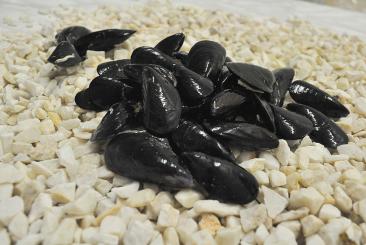 Read More
Read MoreThe warty venus, Venus verrucosa, is a species of saltwater clam. It is a species of marine bivalve mollusc in the family Veneridae, sometimes collectively known as the venus clams. Known as praire in France, it is an expensive delicacy there, and harvesting periods and size of catch (both minimum shell size and numbers taken) have had to be strictly regulated for its conservation. It is eaten either raw or baked in the oven with garlic butter.
-
Oysters Fcin de Belon 14/15
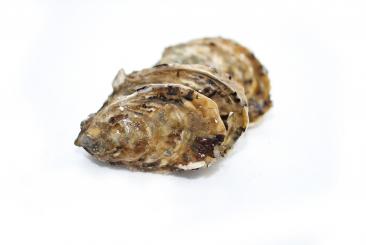 Read More
Read MoreJonathan Swift is quoted as having said, "He was a bold man that first ate an oyster", but evidence of oyster consumption goes back into prehistory, evidenced by oyster middens found worldwide. Oysters were an important food source in all coastal areas where they could be found, and oyster fisheries were an important industry where they were plentiful. Overfishing and pressure from diseases and pollution have sharply reduced supplies, but they remain a popular treat celebrated in oyster festivals in many cities and towns.
It was once assumed that oysters were only safe to eat in months with the letter 'r' in their English and French names. This myth is based in truth, in that in the Northern Hemisphere, oysters are much more likely to spoil in the warmer months of May, June, July, and August. In recent years, pathogens such as Vibrio parahaemolyticus have caused outbreaks in several harvesting areas of the eastern United States during the summer months, lending further credence to this belief.
Nutrition
Oysters are an excellent source of zinc, iron, calcium, and selenium, as well as vitamin A and vitamin B12. Oysters are low in food energy; one dozen raw oysters contains 110 kilocalories (460 kJ).They are rich in protein (approximately 9g in 100g of pacific oysters).
Traditionally, oysters are considered to be an aphrodisiac, partially because they resemble female sex organs. A team of American and Italian researchers analyzed bivalves and found they were rich in amino acids that trigger increased levels of sex hormones. Their high zinc content aids the production of testosterone.
Dietary supplements may contain calcium carbonate from oyster shells, though no evidence shows this offers any benefits beyond what calcium may offer. -
Oysters 12 pcs nr2
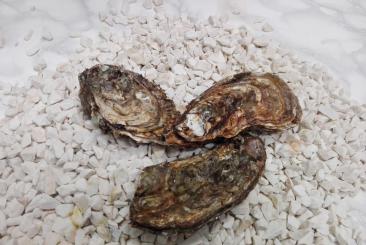 Read More
Read MoreJonathan Swift is quoted as having said, "He was a bold man that first ate an oyster", but evidence of oyster consumption goes back into prehistory, evidenced by oyster middens found worldwide. Oysters were an important food source in all coastal areas where they could be found, and oyster fisheries were an important industry where they were plentiful. Overfishing and pressure from diseases and pollution have sharply reduced supplies, but they remain a popular treat celebrated in oyster festivals in many cities and towns.
It was once assumed that oysters were only safe to eat in months with the letter 'r' in their English and French names. This myth is based in truth, in that in the Northern Hemisphere, oysters are much more likely to spoil in the warmer months of May, June, July, and August. In recent years, pathogens such as Vibrio parahaemolyticus have caused outbreaks in several harvesting areas of the eastern United States during the summer months, lending further credence to this belief.
Nutrition
Oysters are an excellent source of zinc, iron, calcium, and selenium, as well as vitamin A and vitamin B12. Oysters are low in food energy; one dozen raw oysters contains 110 kilocalories (460 kJ).They are rich in protein (approximately 9g in 100g of pacific oysters).
Traditionally, oysters are considered to be an aphrodisiac, partially because they resemble female sex organs. A team of American and Italian researchers analyzed bivalves and found they were rich in amino acids that trigger increased levels of sex hormones. Their high zinc content aids the production of testosterone.
Dietary supplements may contain calcium carbonate from oyster shells, though no evidence shows this offers any benefits beyond what calcium may offer. -
Oysters 12 pcs nr0 Extra
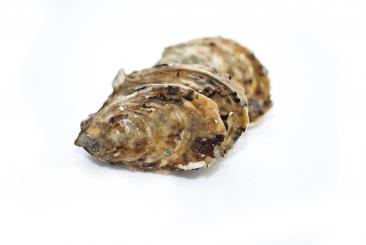 Read More
Read MoreJonathan Swift is quoted as having said, "He was a bold man that first ate an oyster", but evidence of oyster consumption goes back into prehistory, evidenced by oyster middens found worldwide. Oysters were an important food source in all coastal areas where they could be found, and oyster fisheries were an important industry where they were plentiful. Overfishing and pressure from diseases and pollution have sharply reduced supplies, but they remain a popular treat celebrated in oyster festivals in many cities and towns.
It was once assumed that oysters were only safe to eat in months with the letter 'r' in their English and French names. This myth is based in truth, in that in the Northern Hemisphere, oysters are much more likely to spoil in the warmer months of May, June, July, and August. In recent years, pathogens such as Vibrio parahaemolyticus have caused outbreaks in several harvesting areas of the eastern United States during the summer months, lending further credence to this belief.
Nutrition
Oysters are an excellent source of zinc, iron, calcium, and selenium, as well as vitamin A and vitamin B12. Oysters are low in food energy; one dozen raw oysters contains 110 kilocalories (460 kJ).They are rich in protein (approximately 9g in 100g of pacific oysters).
Traditionally, oysters are considered to be an aphrodisiac, partially because they resemble female sex organs. A team of American and Italian researchers analyzed bivalves and found they were rich in amino acids that trigger increased levels of sex hormones. Their high zinc content aids the production of testosterone.
Dietary supplements may contain calcium carbonate from oyster shells, though no evidence shows this offers any benefits beyond what calcium may offer. -
Oysters 12 pcs nr1
 Read More
Read MoreJonathan Swift is quoted as having said, "He was a bold man that first ate an oyster", but evidence of oyster consumption goes back into prehistory, evidenced by oyster middens found worldwide. Oysters were an important food source in all coastal areas where they could be found, and oyster fisheries were an important industry where they were plentiful. Overfishing and pressure from diseases and pollution have sharply reduced supplies, but they remain a popular treat celebrated in oyster festivals in many cities and towns.
It was once assumed that oysters were only safe to eat in months with the letter 'r' in their English and French names. This myth is based in truth, in that in the Northern Hemisphere, oysters are much more likely to spoil in the warmer months of May, June, July, and August. In recent years, pathogens such as Vibrio parahaemolyticus have caused outbreaks in several harvesting areas of the eastern United States during the summer months, lending further credence to this belief.
Nutrition
Oysters are an excellent source of zinc, iron, calcium, and selenium, as well as vitamin A and vitamin B12. Oysters are low in food energy; one dozen raw oysters contains 110 kilocalories (460 kJ).They are rich in protein (approximately 9g in 100g of pacific oysters).
Traditionally, oysters are considered to be an aphrodisiac, partially because they resemble female sex organs. A team of American and Italian researchers analyzed bivalves and found they were rich in amino acids that trigger increased levels of sex hormones. Their high zinc content aids the production of testosterone.
Dietary supplements may contain calcium carbonate from oyster shells, though no evidence shows this offers any benefits beyond what calcium may offer. -
Oysters 12 pcs nr3
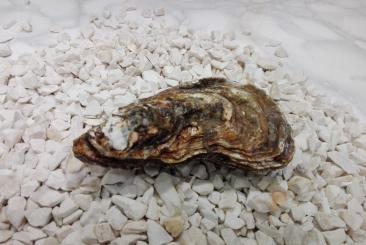 Read More
Read MoreJonathan Swift is quoted as having said, "He was a bold man that first ate an oyster", but evidence of oyster consumption goes back into prehistory, evidenced by oyster middens found worldwide. Oysters were an important food source in all coastal areas where they could be found, and oyster fisheries were an important industry where they were plentiful. Overfishing and pressure from diseases and pollution have sharply reduced supplies, but they remain a popular treat celebrated in oyster festivals in many cities and towns.
It was once assumed that oysters were only safe to eat in months with the letter 'r' in their English and French names. This myth is based in truth, in that in the Northern Hemisphere, oysters are much more likely to spoil in the warmer months of May, June, July, and August. In recent years, pathogens such as Vibrio parahaemolyticus have caused outbreaks in several harvesting areas of the eastern United States during the summer months, lending further credence to this belief.
Nutrition
Oysters are an excellent source of zinc, iron, calcium, and selenium, as well as vitamin A and vitamin B12. Oysters are low in food energy; one dozen raw oysters contains 110 kilocalories (460 kJ).They are rich in protein (approximately 9g in 100g of pacific oysters).
Traditionally, oysters are considered to be an aphrodisiac, partially because they resemble female sex organs. A team of American and Italian researchers analyzed bivalves and found they were rich in amino acids that trigger increased levels of sex hormones. Their high zinc content aids the production of testosterone.
Dietary supplements may contain calcium carbonate from oyster shells, though no evidence shows this offers any benefits beyond what calcium may offer. -
Oysters 25 pcs
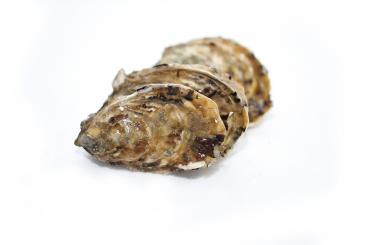 Read More
Read MoreJonathan Swift is quoted as having said, "He was a bold man that first ate an oyster", but evidence of oyster consumption goes back into prehistory, evidenced by oyster middens found worldwide. Oysters were an important food source in all coastal areas where they could be found, and oyster fisheries were an important industry where they were plentiful. Overfishing and pressure from diseases and pollution have sharply reduced supplies, but they remain a popular treat celebrated in oyster festivals in many cities and towns.
It was once assumed that oysters were only safe to eat in months with the letter 'r' in their English and French names. This myth is based in truth, in that in the Northern Hemisphere, oysters are much more likely to spoil in the warmer months of May, June, July, and August. In recent years, pathogens such as Vibrio parahaemolyticus have caused outbreaks in several harvesting areas of the eastern United States during the summer months, lending further credence to this belief.
Nutrition
Oysters are an excellent source of zinc, iron, calcium, and selenium, as well as vitamin A and vitamin B12. Oysters are low in food energy; one dozen raw oysters contains 110 kilocalories (460 kJ).They are rich in protein (approximately 9g in 100g of pacific oysters).
Traditionally, oysters are considered to be an aphrodisiac, partially because they resemble female sex organs. A team of American and Italian researchers analyzed bivalves and found they were rich in amino acids that trigger increased levels of sex hormones. Their high zinc content aids the production of testosterone.
Dietary supplements may contain calcium carbonate from oyster shells, though no evidence shows this offers any benefits beyond what calcium may offer. -
Oysters 50 pcs
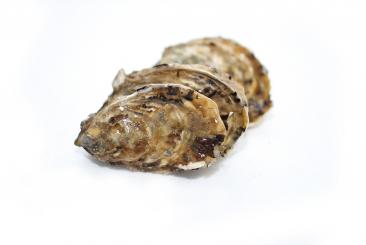 Read More
Read MoreJonathan Swift is quoted as having said, "He was a bold man that first ate an oyster", but evidence of oyster consumption goes back into prehistory, evidenced by oyster middens found worldwide. Oysters were an important food source in all coastal areas where they could be found, and oyster fisheries were an important industry where they were plentiful. Overfishing and pressure from diseases and pollution have sharply reduced supplies, but they remain a popular treat celebrated in oyster festivals in many cities and towns.
It was once assumed that oysters were only safe to eat in months with the letter 'r' in their English and French names. This myth is based in truth, in that in the Northern Hemisphere, oysters are much more likely to spoil in the warmer months of May, June, July, and August. In recent years, pathogens such as Vibrio parahaemolyticus have caused outbreaks in several harvesting areas of the eastern United States during the summer months, lending further credence to this belief.
Nutrition
Oysters are an excellent source of zinc, iron, calcium, and selenium, as well as vitamin A and vitamin B12. Oysters are low in food energy; one dozen raw oysters contains 110 kilocalories (460 kJ).They are rich in protein (approximately 9g in 100g of pacific oysters).
Traditionally, oysters are considered to be an aphrodisiac, partially because they resemble female sex organs. A team of American and Italian researchers analyzed bivalves and found they were rich in amino acids that trigger increased levels of sex hormones. Their high zinc content aids the production of testosterone.
Dietary supplements may contain calcium carbonate from oyster shells, though no evidence shows this offers any benefits beyond what calcium may offer. -
French Oysters 6/8
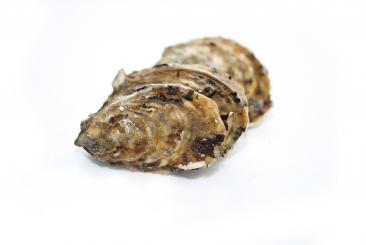 Read More
Read MoreJonathan Swift is quoted as having said, "He was a bold man that first ate an oyster", but evidence of oyster consumption goes back into prehistory, evidenced by oyster middens found worldwide. Oysters were an important food source in all coastal areas where they could be found, and oyster fisheries were an important industry where they were plentiful. Overfishing and pressure from diseases and pollution have sharply reduced supplies, but they remain a popular treat celebrated in oyster festivals in many cities and towns.
It was once assumed that oysters were only safe to eat in months with the letter 'r' in their English and French names. This myth is based in truth, in that in the Northern Hemisphere, oysters are much more likely to spoil in the warmer months of May, June, July, and August. In recent years, pathogens such as Vibrio parahaemolyticus have caused outbreaks in several harvesting areas of the eastern United States during the summer months, lending further credence to this belief.
Nutrition
Oysters are an excellent source of zinc, iron, calcium, and selenium, as well as vitamin A and vitamin B12. Oysters are low in food energy; one dozen raw oysters contains 110 kilocalories (460 kJ).They are rich in protein (approximately 9g in 100g of pacific oysters).
Traditionally, oysters are considered to be an aphrodisiac, partially because they resemble female sex organs. A team of American and Italian researchers analyzed bivalves and found they were rich in amino acids that trigger increased levels of sex hormones. Their high zinc content aids the production of testosterone.
Dietary supplements may contain calcium carbonate from oyster shells, though no evidence shows this offers any benefits beyond what calcium may offer. -
Oysters a vista 11/15
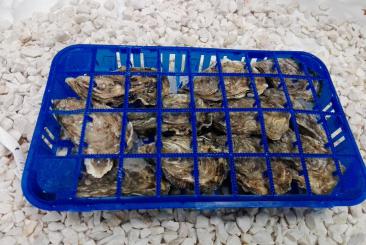 Read More
Read MoreJonathan Swift is quoted as having said, "He was a bold man that first ate an oyster", but evidence of oyster consumption goes back into prehistory, evidenced by oyster middens found worldwide. Oysters were an important food source in all coastal areas where they could be found, and oyster fisheries were an important industry where they were plentiful. Overfishing and pressure from diseases and pollution have sharply reduced supplies, but they remain a popular treat celebrated in oyster festivals in many cities and towns.
It was once assumed that oysters were only safe to eat in months with the letter 'r' in their English and French names. This myth is based in truth, in that in the Northern Hemisphere, oysters are much more likely to spoil in the warmer months of May, June, July, and August. In recent years, pathogens such as Vibrio parahaemolyticus have caused outbreaks in several harvesting areas of the eastern United States during the summer months, lending further credence to this belief.
Nutrition
Oysters are an excellent source of zinc, iron, calcium, and selenium, as well as vitamin A and vitamin B12. Oysters are low in food energy; one dozen raw oysters contains 110 kilocalories (460 kJ).They are rich in protein (approximately 9g in 100g of pacific oysters).
Traditionally, oysters are considered to be an aphrodisiac, partially because they resemble female sex organs. A team of American and Italian researchers analyzed bivalves and found they were rich in amino acids that trigger increased levels of sex hormones. Their high zinc content aids the production of testosterone.
Dietary supplements may contain calcium carbonate from oyster shells, though no evidence shows this offers any benefits beyond what calcium may offer. -
Dutch oysters 11/15
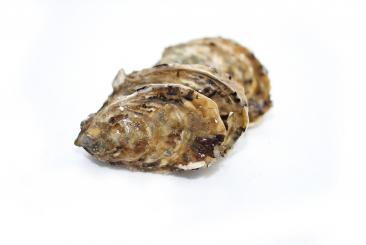 Read More
Read MoreJonathan Swift is quoted as having said, "He was a bold man that first ate an oyster", but evidence of oyster consumption goes back into prehistory, evidenced by oyster middens found worldwide. Oysters were an important food source in all coastal areas where they could be found, and oyster fisheries were an important industry where they were plentiful. Overfishing and pressure from diseases and pollution have sharply reduced supplies, but they remain a popular treat celebrated in oyster festivals in many cities and towns.
It was once assumed that oysters were only safe to eat in months with the letter 'r' in their English and French names. This myth is based in truth, in that in the Northern Hemisphere, oysters are much more likely to spoil in the warmer months of May, June, July, and August. In recent years, pathogens such as Vibrio parahaemolyticus have caused outbreaks in several harvesting areas of the eastern United States during the summer months, lending further credence to this belief.
Nutrition
Oysters are an excellent source of zinc, iron, calcium, and selenium, as well as vitamin A and vitamin B12. Oysters are low in food energy; one dozen raw oysters contains 110 kilocalories (460 kJ).They are rich in protein (approximately 9g in 100g of pacific oysters).
Traditionally, oysters are considered to be an aphrodisiac, partially because they resemble female sex organs. A team of American and Italian researchers analyzed bivalves and found they were rich in amino acids that trigger increased levels of sex hormones. Their high zinc content aids the production of testosterone.
Dietary supplements may contain calcium carbonate from oyster shells, though no evidence shows this offers any benefits beyond what calcium may offer. -
Dutch oysters 3kg
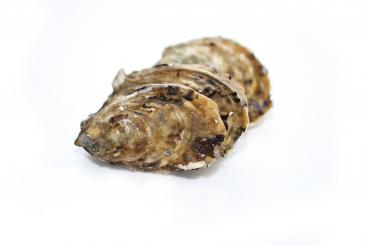 Read More
Read MoreJonathan Swift is quoted as having said, "He was a bold man that first ate an oyster", but evidence of oyster consumption goes back into prehistory, evidenced by oyster middens found worldwide. Oysters were an important food source in all coastal areas where they could be found, and oyster fisheries were an important industry where they were plentiful. Overfishing and pressure from diseases and pollution have sharply reduced supplies, but they remain a popular treat celebrated in oyster festivals in many cities and towns.
It was once assumed that oysters were only safe to eat in months with the letter 'r' in their English and French names. This myth is based in truth, in that in the Northern Hemisphere, oysters are much more likely to spoil in the warmer months of May, June, July, and August. In recent years, pathogens such as Vibrio parahaemolyticus have caused outbreaks in several harvesting areas of the eastern United States during the summer months, lending further credence to this belief.
Nutrition
Oysters are an excellent source of zinc, iron, calcium, and selenium, as well as vitamin A and vitamin B12. Oysters are low in food energy; one dozen raw oysters contains 110 kilocalories (460 kJ).They are rich in protein (approximately 9g in 100g of pacific oysters).
Traditionally, oysters are considered to be an aphrodisiac, partially because they resemble female sex organs. A team of American and Italian researchers analyzed bivalves and found they were rich in amino acids that trigger increased levels of sex hormones. Their high zinc content aids the production of testosterone.
Dietary supplements may contain calcium carbonate from oyster shells, though no evidence shows this offers any benefits beyond what calcium may offer. -
Oysters nr 2 24 pcs
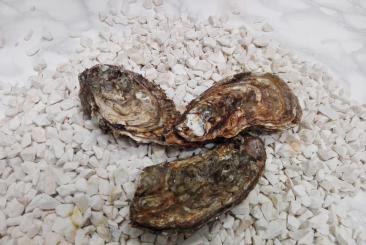 Read More
Read MoreJonathan Swift is quoted as having said, "He was a bold man that first ate an oyster", but evidence of oyster consumption goes back into prehistory, evidenced by oyster middens found worldwide. Oysters were an important food source in all coastal areas where they could be found, and oyster fisheries were an important industry where they were plentiful. Overfishing and pressure from diseases and pollution have sharply reduced supplies, but they remain a popular treat celebrated in oyster festivals in many cities and towns.
It was once assumed that oysters were only safe to eat in months with the letter 'r' in their English and French names. This myth is based in truth, in that in the Northern Hemisphere, oysters are much more likely to spoil in the warmer months of May, June, July, and August. In recent years, pathogens such as Vibrio parahaemolyticus have caused outbreaks in several harvesting areas of the eastern United States during the summer months, lending further credence to this belief.
Nutrition
Oysters are an excellent source of zinc, iron, calcium, and selenium, as well as vitamin A and vitamin B12. Oysters are low in food energy; one dozen raw oysters contains 110 kilocalories (460 kJ).They are rich in protein (approximately 9g in 100g of pacific oysters).
Traditionally, oysters are considered to be an aphrodisiac, partially because they resemble female sex organs. A team of American and Italian researchers analyzed bivalves and found they were rich in amino acids that trigger increased levels of sex hormones. Their high zinc content aids the production of testosterone.
Dietary supplements may contain calcium carbonate from oyster shells, though no evidence shows this offers any benefits beyond what calcium may offer. -
Vongole/Manila Clam
 Read More
Read More -
Blue mussels
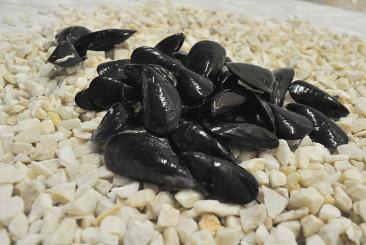 Read More
Read More -
Spiny dye murex
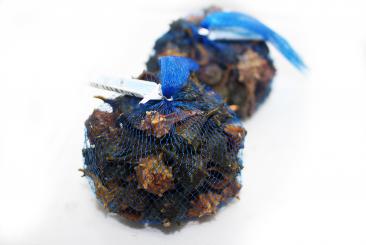 Read More
Read More
